Art in NYC: Felix Feneon – the Anarchist and the Avant-Garde at MoMA
“Félix Fénéon: The Anarchist and the Avant-Garde—From Signac to Matisse and Beyond” at MoMA is the first exhibition devoted to the influential French art critic, editor, publisher, dealer, and collector.
On view through January 2, 2021
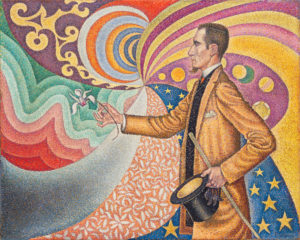
In this abnormal time, a museum visit takes on a new meaning. It is both a return to normal life as we remember it and an affirmation of the unchanged desire to explore and experience art. A visit to MoMA to see the exhibit dedicated to Felix Feneon is exactly that.
Well researched and painstakingly laid out, the show brings familiar works by such giants of the late 19th-century art scene as Seurat, Signac, Vuillard, Matisse, Modigliani and the non-Western art together following the superb taste and visionary aesthetics of the French art critic and collector Felix Feneon. Credited with coining the term Neo-Impressionism, he had recognized the significance of pointillism and other scientifically ordered art movements and tirelessly promoted them to the public. His fascination with non-Western art and sculpture propelled the interest in the works made in Africa and Oceania. The mesmerizing figurines from the Musee d’Orsay, Musée du quai Branly-Jacques Chirac, and private collections stun the viewers by the power and exquisite mastery of execution.
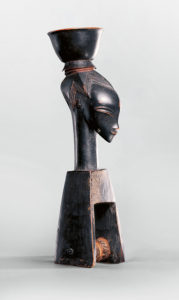
The exhibit comes with an intriguing story of Feneon’s support and participation in the Anarchist movement while working at the Ministry of War. The episode of his imprisonment and a consequent trial are described in the show through the documents, photographs, and testimonies. Excerpts from his writing and publications are full of wit and elegance while the portraits of him by Valloton and Signac present a Mephistopheles-like figure.
The show tells the life story of a visionary who influenced the perception of art by his contemporaries and bravely advanced the Neo-Impressionists and Futurists. Indulge yourself in art and enjoy the show!
Stay in the know about future events and offers by subscribing to ARTS-NY newsletter

Felix Feneon (1861-1944), a prominent art and literary critic, arrived in Paris in his early twenties. He spent thirteen years working and rising in the ranks as a clerk at the Ministry of War. While still there or maybe even because of it, he became active in the anarchist’s circles and was arrested in connection with the so-called Trial of the Thirty. Acquitted at the trial, he kept writing for La Revue Blanche and other periodicals and took a close interest in the artworks by George Seurat and other pointillists.
Well known for his impeccable taste and erudition, he was among the first to recognize the consequences of the use of color theory in art and technology. The memorable portrait by Signac from the MoMA collection with Feneon standing against a spiraling pattern is an icon of Neo-Impressionism. MoMA’s exhibit may as well be an expose in pointillism for its rich selection of masterpieces in the genre from Seurat and Signac to Henri-Edmond Cross, Maximilian Luce and others. The scenes and subjects of those works refreshingly deviate from the overexploited subjects depicting female bathers and actresses.
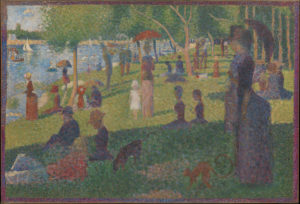
Seurat held a central place in Feneon’s private collection. His moody drawings on paper are of particular interest. In the show, these are juxtaposed with the explosion of colors by Matisse who was inspired by the springtime in Collioure, France. Playful and bright, they bring peace and calm that stay in the air. Feneon signed a contract to represent Matisse and Modigliani when he took a position at Gallery Bernheim-Jeune. Made responsible for bringing avant-garde artists to the established gallery, Feneon invited Italian futurists Umberto Boccioni, Gino Severini, Luigi Russell to exhibit. Their works are also on view at MoMA.
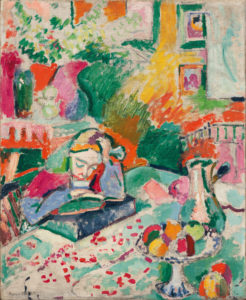
Known for his anarchist views and critique of capitalism and colonialism, Feneon was one of the first admirers of the artworks made in Africa, Oceania, and the Americas. The wooden sculptures on view in the exhibit were originally in Feneon’s private collection and were auctioned off after his death in 1944. His advocacy for the appreciation of these artworks as artistic expressions rather than anthropological artifacts led to the now controversial practice of keeping the art in European museums. At the same time, he introduced these new art forms to the Western public. That started the education of the public and ultimately led to the changes in the understanding of ownership and belonging of indigenous art
Stay in the know about future events and offers by subscribing to ARTS-NY newsletter
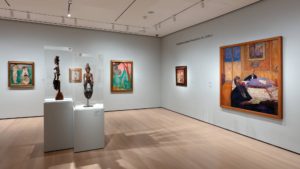
The exhibit has some samples of the “News in Three Lines” column which Feneon wrote for Le Matin in 1906. Notoriously shy of ownership claims, the detached and clever news snippets were published anonymously. Their authorship was only revealed in the 1940s. Here is one three-liner: “Mr. Jules Kerzerho was president of a gymnastics club, and yet he was run over trying to jump into a streetcar in Rueil.”
MoMA’s exhibit “Félix Fénéon: The Anarchist and the Avant-Garde—From Signac to Matisse and Beyond” is one of a trio of complementary exhibitions devoted to Fénéon that are organized by The Museum of Modern Art, the Musées d’Orsay et de l’Orangerie, Paris, and the Musée du quai Branly-Jacques Chirac, Paris.
When planning to visit MoMA, book your time online on the MoMA website and remember to wear a mask at the museum. Enjoy the show!
Date: August 27, 2020 – January 02, 2021
One thought to “Art in NYC: Felix Feneon – the Anarchist and the Avant-Garde at MoMA”
Comments are closed.